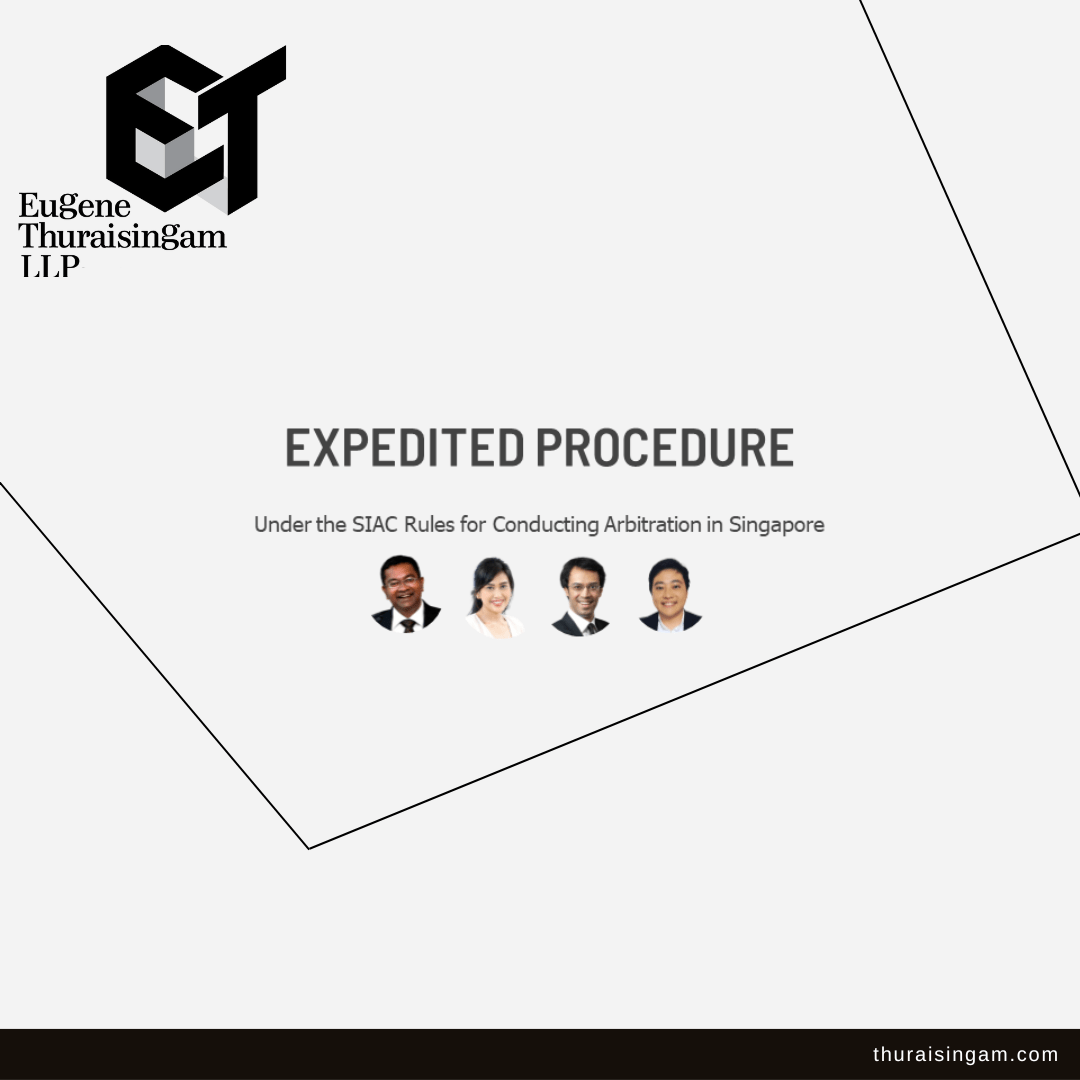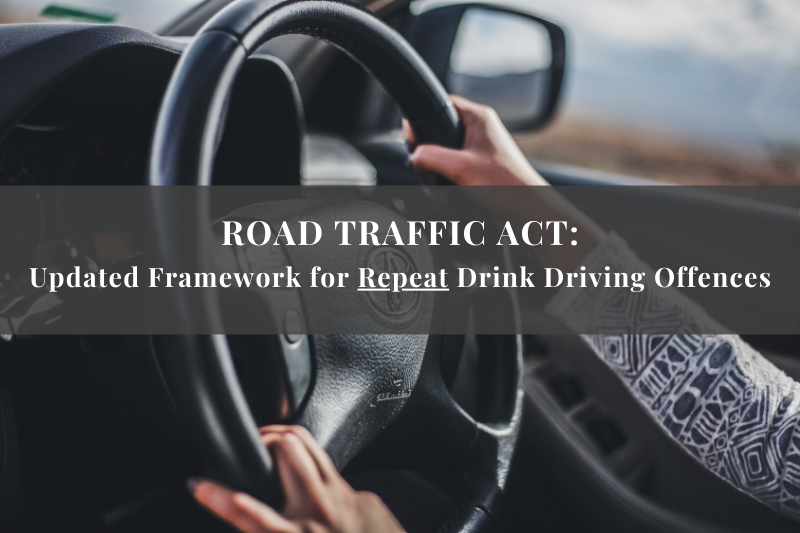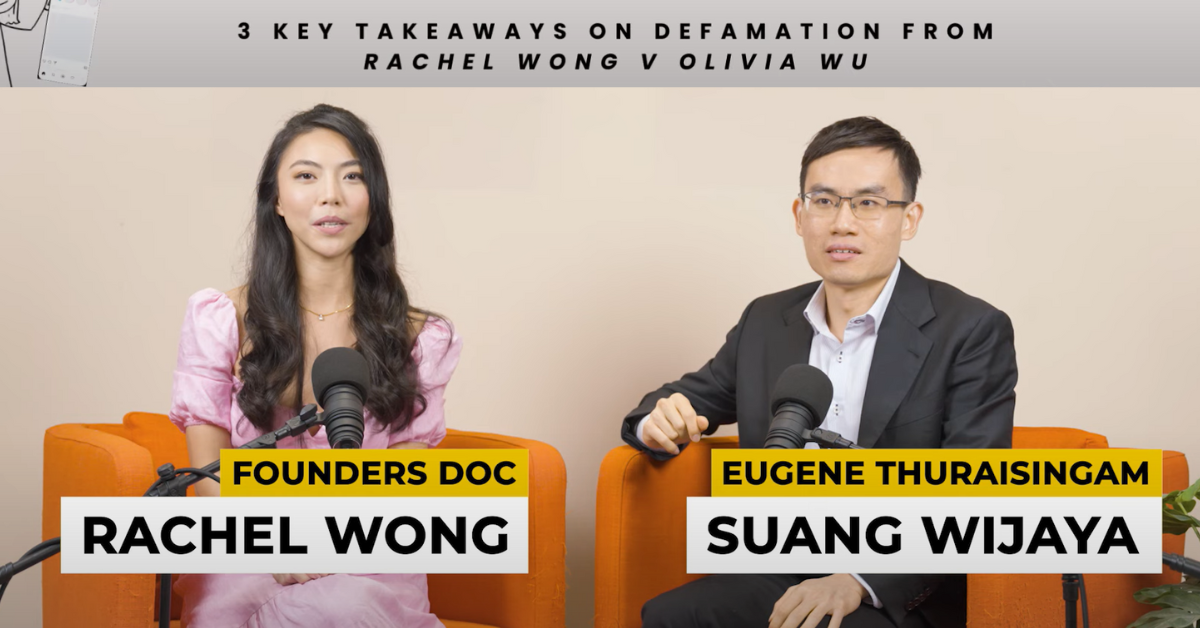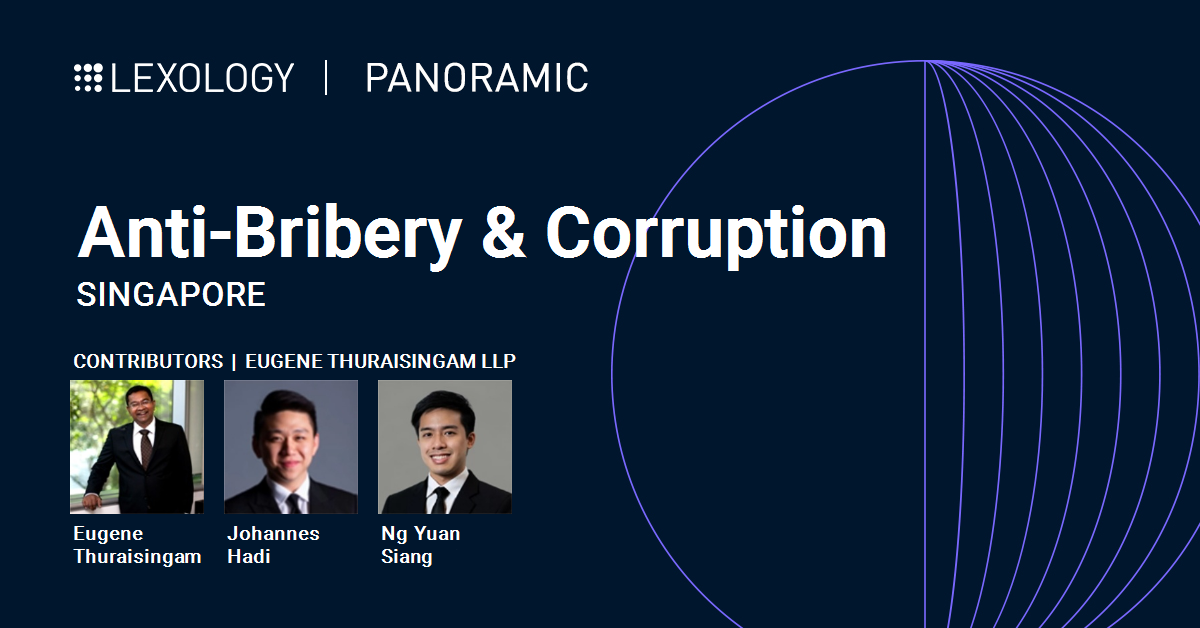Expedited Procedure Under the SIAC Rules for Conducting Arbitration in Singapore
The team at Eugene Thuraisingam LLP, Eugene Thuraisingam, Syazana Yahya, Hamza Malik, and Genghis Koh delivered a webinar titled “Expedited Procedure Under the SIAC Rules for Conducting Arbitration in Singapore”, for a Cambodian law firm.
A. Overview of Arbitration Process in Singapore
In Singapore, the key procedural steps for an arbitration case are as follows:
- Initiation of Arbitration: the party who wishes to commence an arbitration will file a Notice of Arbitration, and serve it on the other party. The responding party is required to serve a brief response to the Notice of Arbitration within 14 days, confirming or denying its claims.
- Appointment of Arbitrator(s): Usually, parties can decide the number and identity of the arbitrator(s) by providing for this in the arbitration clause in their contract. If not, the Singapore International Arbitration Centre (“SIAC”) can decide who is going to be the arbitrator. The preferred number of arbitrators is usually 1 or 3. Parties normally prefer an odd number because two arbitrators may take opposing positions, causing a deadlock in resolving the arbitration.
- Preliminary Meeting: Once the tribunal is constituted, a preliminary meeting is normally held, where parties and the tribunal meet to discuss and agree on how the process is going to move forward, as well as the timetable. Arbitration differs from Court, in that it is supposed to be more amicable and consensus-based. The onus is on parties to come to agreements on how they want to move the arbitration forward, including the appropriate steps, timetable, and (if not previously agreed) the appropriate rules governing the arbitration as well as the governing rules for how evidence is to be presented in the arbitration.
- Statement of Claim: The claimant then will serve the claim document, setting out a summary of the matters in dispute as well as the remedy sought.
- Statement of Defence: The respondent to the arbitration, that is, the person who is a defendant, will then file a defence, saying which parts of the claim he admits to, and which parts he denies. He can also bring a counterclaim.
- Disclosure of Documents: After the statement of response is filed, parties disclose documents relevant to the dispute in the arbitration.
- Witness Statements: Parties will prepare witness statements once all relevant documents are with them. The witness statements are for all witnesses which each side wishes to call. Both the claimant and the respondent may have a number of factual witnesses and, depending on the nature of the dispute, expert witnesses.
- Hearing: Thereafter, there will be a hearing before the arbitration tribunal at which the witnesses will be cross-examined on the evidence in their witness statements. The tribunal will thereafter render an award.
B. What is the Expedited Procedure Arbitration Process in Singapore?
In 2010, SIAC introduced the Expedited Procedure for arbitrations as a time and cost-saving option for parties who want to conclude an arbitration quickly. Under the Expedited Procedure, the tribunal can render an award on parties’ arbitration within 6 months from the date of initiation of the arbitration. This is in contrast to the normal arbitration process, which takes between 1 – 3 years.
- The tribunal may in consultation with parties, decide if the arbitration should be decided only on documents, that is, there is no cross-examination of witnesses, or whether there is a need for a full hearing where factual witnesses, the expert witnesses are cross-examined, and perhaps even, oral arguments on the law, and the effect of the evidence which came out during the hearing determined.
- Under these rules, the final award must be made within six months from the date when the tribunal is constituted. Unless, in exceptional circumstances the registrar extends the time for making of such a final award. This benefits parties who want a very quick decision. The decision has to be rendered within six months of the arbitration starting. And the award which is going to be given by the tribunal, usually in court, or in common-law countries, or in arbitration, the tribunal will state in a very long judgment, why they rule for either the claimant, or the respondent.
- In the expedited procedure, there is no long award given, but rather, the tribunal will state his reasons. The reasons will be based on a summary form. Unless, of course, both parties have agreed that, there’s no need for the tribunal to give reasons. They can just make the decision as to whether the claimant wins, or the respondent is successful in the defense. That ends my overview of the Expedited Procedure.
C. What Are the Key Features of an Arbitration Under the Expedited Procedure provided by SIAC?
Decision within 6 months: The award must be made within 6 months from the date of constitution of the Tribunal, unless there are exceptional circumstances permitting an extension. This benefits parties who require a speedy decision.1
Sole arbitrator: The first thing to note, is that, the default position is that, there will, most of the time be one arbitrator. The president of SIAC has the discretion to decide otherwise.2 Generally, in an Expedited Procedure situation, there will only be one arbitrator, not three.
Option for Documents-only Arbitration, or Arbitration Hearing: Under the Expedited Procedure, the tribunal has full discretion to decide whether a hearing should take place, or whether the arbitration can be decided only on documents.3 This is different from the position under a normal arbitration under the SIAC Rules, where if a party requests a hearing, the tribunal has to grant a hearing.4 Moreover, under the Expedited Procedure, the tribunal can decide whether to hold or whether to dispense with a hearing during the course of the arbitration. It does not have to decide it right at the beginning.
Tribunal has the flexibility to control proceedings to meet the 6-month timeline: Hearings under the Expedited Procedure typically last 1 -2 days. However, even though the arbitration has to be concluded within six months, there need be no limit to the length of the hearings under the Expedited Procedure. If necessary, the tribunal can lengthen the 6-month time frame by a few days to accommodate a slightly longer hearing. The aim of the Tribunal is to respect the 6-month timeline, while giving parties a fair chance for their arguments to be heard.
What that means in practice, is that the tribunal can potentially not allow a party to introduce claims during the course of an Expedited Procedure arbitration because it will delay the six-month timeline. For the same reason, it has the discretion not to allow a party to make too many requests for documentary evidence of the other party. Another method the tribunal may use is to combine two steps of the arbitration into one, for example by requiring that the claim and witness statements are served together upfront.
Tribunal will give reasons in summary form: in an expedited procedure arbitration, the Tribunal has the option of stating the reasons in summary form.5 This further speeds up the delivery of the award.
Overriding of contrary terms in arbitration agreement: By agreeing to arbitrate under the SIAC Rules, the expedited procedure may override contrary terms in parties’ arbitration agreement.6
In Singapore, this has been discussed only in the context of an agreement as to the number of arbitrators: see AQZ v ARA [2015] 2 SLR 972. Parties’ arbitration agreement, in that case, contained an agreement for 3 arbitrators. During the arbitration, one party applied for the Expedited Procedure and 1 arbitrator was appointed. The claimant appealed to the Singapore Court of Appeal, on the basis they had agreed that 3 arbitrators should be appointed. The Singapore Court of Appeal held that one arbitrator could still be appointed despite the parties’ original agreement. The Court of Appeal’s reasoning was that the parties had agreed to arbitrate according to the SIAC Rules, which incorporated the Expedited Procedure, providing for one arbitrator and their dispute was of a relatively small value. It would be odd not to allow them to simply appoint one arbitrator and follow the Expedited Procedure.
The Singapore Court of Appeal’s reasoning in this is to be noted when drafting arbitration agreements that provide for the SIAC Rules in the future.
D. What are the Qualifying Criteria for Expedited Procedure Arbitrations?
There are 3 criteria to take note of. SIAC is likely to grant the Expedited Procedure should any one of these 3 criteria apply to the dispute in question:
Amount of Dispute: the dispute has to be under, or equivalent to SGD 6,000,000 in total. This amount includes the aggregate amount of the claimant’s claim, the respondent’s counterclaim, and any defence of set-off.
Parties Agree on the Expedited Procedure: This can be agreed, either in the original arbitration agreement, or subsequently. SIAC has a model clause for parties to use in their original agreement.
There is exceptional urgency about the case justifying the invocation of the Expedited Procedure: there has to be some sort of exceptional urgency about your case that justifies deciding everything in six months. This depends on the facts involved. For example, there could be a dispute where a claimant is unable to fulfil payment obligations due to a respondent’s failure to pay the claimant. This could lead to losses for the claimant that are beyond the value of the dispute in question, making it a case of exceptional urgency. If there is a real risk of dissipation of assets, that could also justify the use of the Expedited Procedure.
Once one of the 3 qualifying criteria set out above is made out, the Registrar of SIAC will normally make a determination that the case should be conducted in accordance with the Expedited Procedure. However, the Registrar still has the discretion to confirm whether the Expedited Procedure should apply, notwithstanding the satisfaction of any of the 3 qualifying criteria. The Registrar may take into account the complexity of the case and whether it can be satisfactorily resolved within the tight timelines of the Expedited Procedure. If the case is multi-jurisdictional and the subject matter of the dispute is largely centred on another jurisdiction, the Registrar may consider whether there will be any evidentiary impact arising from the shortened timelines, such as the inability to adduce key evidence within the required 6 months.
E. How has COVID-19 impacted Expedited Procedure Arbitrations?
In one of our Expedited Procedure arbitrations conducted recently, the Respondent resisted our client’s application for the Expedited Procedure on the basis that: (i) COVID-19 had made it more difficult for them to take instructions from their clients based overseas, especially in the six-month time frame, and (ii) it had made a physical hearing harder to hold within 6 months.
These arguments were rejected. The Registrar did not give his reasons. However, we can assume that one reason would have been the availability of video-link, especially as parties have become more accustomed to using in the current COVID-19 situation. The second reason could be because there is a flexibility for the Tribunal to extend the timelines if necessary even after the case begins on an Expedited Procedure basis. The Tribunal can also, of course, decide whether the dispute may be decided on documents alone, and does not require a physical hearing.
F. Can the Expedited Procedure Be Challenged on the Basis It Removes the Right of Parties to Challenge the Jurisdiction of the Tribunal as a Preliminary Step?
Parties sometimes seek to challenge the jurisdiction of the Tribunal. An example could be where parties seek to point to the fact that pre-arbitration negotiations with a view to resolving the dispute were not carried out as per the parties’ arbitration agreement. In this situation, the tribunal would not be vested with jurisdiction until such negotiations were carried out.
A further argument raised by the Respondent in one of our recent Expedited Procedure arbitrations was that the Expedited Procedure removed the option for parties to challenge the jurisdiction of the tribunal as a preliminary step, thereby saving time and costs. The SIAC Rules provide for objections to the jurisdiction of the arbitrator.7 If such a challenge fails, the unsuccessful party can bring an appeal within 30 days to the Singapore High Court against any decision of the SIAC Court on the jurisdiction of the arbitrator.8
G. Sample Timelines for an Expedited Procedure Arbitration
A sample timetable for an Expedited Procedure is given below. The timelines are far shorter than those in a normal arbitration, which could take anywhere between 1 – 3 years to conclude.
H. What Happens if the Arbitration Cannot Be Completed Within Six Months?
Simply put, two outcomes may occur:
Option 1: The first thing that can happen is that the six-month timeline can be extended by the registrar. However, the Registrar will only do this if there are exceptional circumstances.
Option 2: the second option is that the tribunal can also order that the proceedings no longer be conducted with the Expedited Procedure.
I. What Are the Practical Ways to Make Sure That Your Arbitration Is Concluded Within a Six-Month Time Frame?
A party that wishes to conclude its arbitration within the six-month timeframe contemplated by the Expedited Procedure may wish to consider where it can be flexible in its approach to the arbitration. A case where documentary evidence is clear may not require a hearing. Similarly, there may not be a requirement to serve witness statements later than a claim, if a party has most of the documentary evidence available.
On the other hand, where the documentary evidence is in favour of the other side, a party may prefer to cross-examine witnesses on their evidence in a hearing. Further, a documents-only arbitration will not be appropriate if the dispute turns on the bad assertion of a witness about what had happened, and where there are no supporting documents, and nothing is written.
Another method is to limit the scope of the witness evidence, and the expert evidence. The tribunal can help identify the issues on which it requires evidence to decide the dispute early, so that the scope of witness evidence remained tight. The tribunal can also ensure that expert evidence is only focussed on the tightly decided issues in dispute.
Another option is to use the chess clock method. This is a procedure to ensure that the amount of time that each party has during the hearing proper is strictly prescribed in advance.
J. Factors to Consider Before Deciding on an Expedited Procedure Arbitration
As mentioned, the Expedited Procedure is a good option for parties seeking to save time and legal costs.
Other situations in which the Expedited Procedure will be useful are, for example, instances where a party is going bankrupt. In that situation, the Expedited Procedure is very useful, because a claimant then gets their award quickly and enforces it before anything happens to the buyer’s company. However, if a party’s dispute is overly complex, or technical, the short time frame can make it difficult for you to fully present your case.
Parties should also consider the availability of legal counsel. In some jurisdictions, it may be difficult to get legal counsel, or retain legal counsel, on a full-time basis, at such short notice and to conduct an arbitration within a compressed time frame. This should be considered in advance so that the Expedited Procedure can proceed without any hiccups.
Footnotes
- Rule 5.2(d) of the Arbitration Rules of the Singapore International Arbitration Centre (SIAC Rules, 6th Edition, 1st August 2016) (“SIAC Rules”)
- Rule 5.2(b) of the SIAC Rules.
- Rule 5.2(c) of the SIAC Rules.
- Rule 24.1 of the SIAC Rules.
- Rule 5.2(e) of the SIAC Rules.
- Rule 5.3 of the SIAC Rules.
- Rule 28.3 of the SIAC Rules.
- Section 10 of Singapore’s International Arbitration Act (Cap 143A, 2002 Rev. Ed.).

